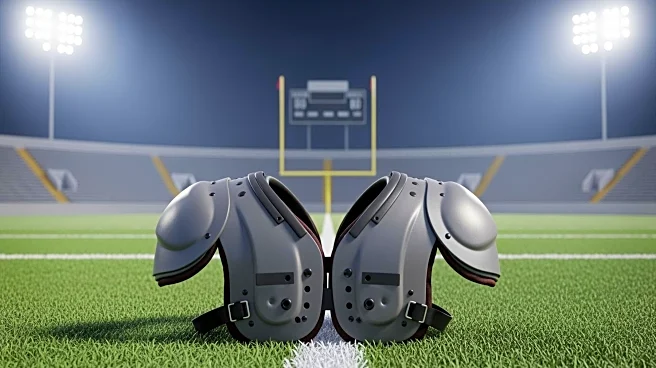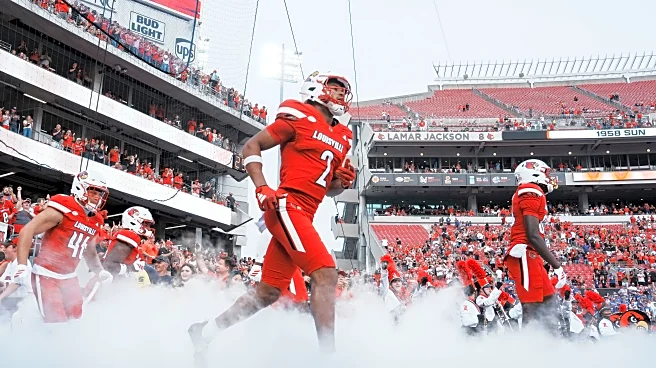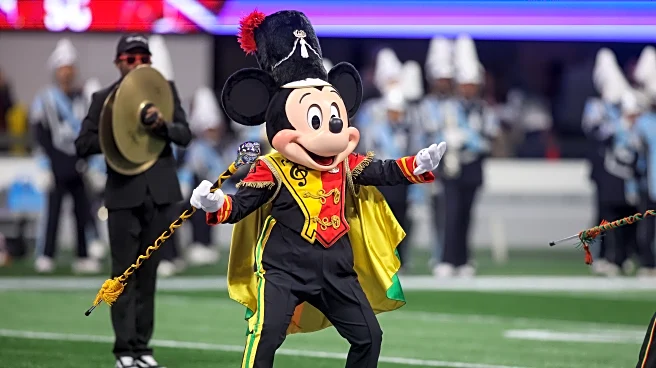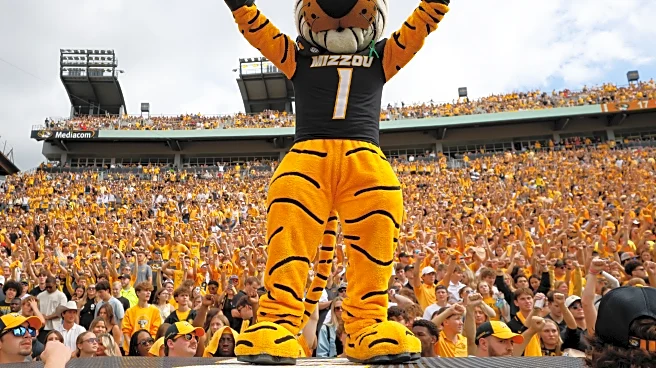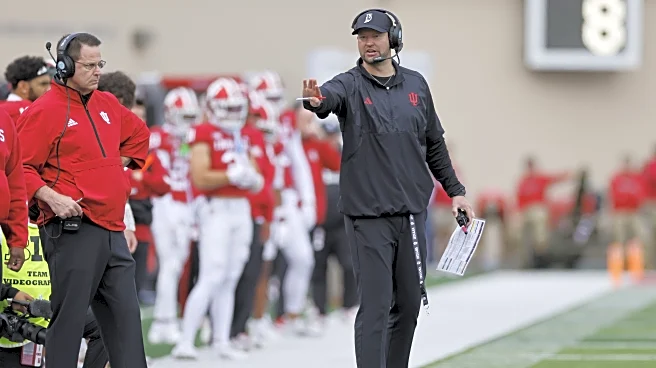What's Happening?
The Colorado Buffaloes are facing a significant challenge as they head into a crucial game against West Virginia University. Their top offensive lineman, Jordan Seaton, has been ruled out due to an injury, seen in street clothes with a walking boot on his
right foot. Seaton, a former five-star recruit, was a game-time decision but ultimately missed his first game of the season. His absence is a considerable blow to the Buffaloes, who are in a postseason elimination scenario. Seaton was highly sought after, with offers from over 30 schools, including Tennessee, Ohio State, Oregon, and Georgia. His recruitment was heavily influenced by Shedeur Sanders, and he was part of Coach Prime's Florida pipeline haul.
Why It's Important?
Jordan Seaton's absence is a critical loss for the Colorado Buffaloes, impacting their offensive line's strength and overall team performance. As a top recruit and key player, his presence on the field has been instrumental in the team's strategy and execution. The Buffaloes are now facing increased pressure in their postseason elimination game against WVU, which could affect their chances of advancing further. This development also highlights the challenges teams face with player injuries and the impact on their competitive edge. The situation underscores the importance of depth and resilience in college football, as teams must adapt to unforeseen circumstances.
What's Next?
The Buffaloes will need to adjust their strategy to compensate for Seaton's absence, potentially relying on other players to step up and fill the gap. The coaching staff may need to explore alternative formations or plays to maintain their competitive edge against WVU. The outcome of this game will be crucial for the Buffaloes' postseason aspirations, and their ability to adapt to this setback will be tested. Additionally, the team will likely focus on Seaton's recovery and assess his availability for future games, which could influence their long-term planning and recruitment strategies.
Beyond the Headlines
Seaton's injury raises broader questions about player health and safety in college sports, particularly the pressures faced by top recruits. The incident may prompt discussions on the support systems in place for injured athletes and the long-term implications of such injuries on their careers. It also highlights the role of recruitment strategies and the reliance on star players, which can leave teams vulnerable when key individuals are sidelined. This situation could lead to increased scrutiny on how teams manage player welfare and the balance between competitive success and athlete well-being.
